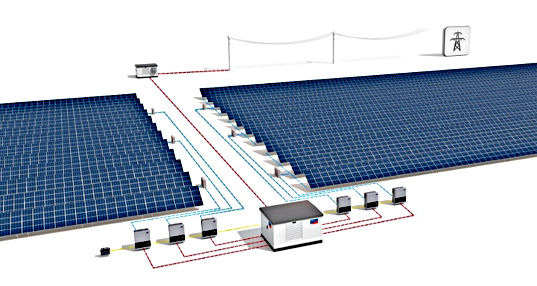
The first long-term renewable technology that was decided to be analysed in an urban-scale is a solar PV farm. The main drivers for choosing to analyse this urban-scale technology are firstly the excellent solar irradiation resource in the area throughout the year and secondly the fact that it’s easy to implement in the sense that nationwide problems such as political instability, financial constraints, and legal frameworks can be bypassed.
This renewable technology carries a number of advantageous and disadvantageous features. The main disadvantageous features of this technology is firstly the relatively large amount of area needed to implement it at an urban scale. Secondly, the electricity generation for this technology is restricted to hours where there is sunlight; and lastly the high capital cost when compared to other energy generation technologies. The main advantageous features of this technology is the unlimited resource needed to generate electricity. Secondly, the low and fixed operational costs related to this technology; and lastly the lack of CO₂ emissions.

The approach undertaken in order to precisely analyse the possibility of implementing this urban scale renewable technology is summarised in a number of steps below:
1. Technical Analysis
• Generate future domestic and commercial demand profiles for the city
• Set the boundary limits of the analysis
• Simulate a number of PV generation capacities for the commercial and domestic energy demand of the city in 2030, 2040 and 2050 using HOMER-Pro
• Perform demand/supply matching for the number of generation capacities simulated for 2030, 2040 and 2050 • Deduce the values of annual electricity generation for each of the generation capacities simulated
• Calculate the percentage of the city’s energy demand that can be covered with each of the generation capacities simulated .
2. Financial Analysis
• Set the boundary limits of the analysis • Perform the annual cash flow for the entire lifetime of the project for the number of generation capacities simulated
• Calculate the cost of energy produced, the net present value, the payback period, and the internal rate of return based on the cash flow
• Perform a sensitivity analysis on the selling price against the net present value and the payback period .
3. Selection of optimum generation capacity
• Select the optimum generation capacity of PV farm to be implemented in 2030
• Select the optimum generation capacities of PV to be added to the solar farm in 2040 and subsequently in 2050 .